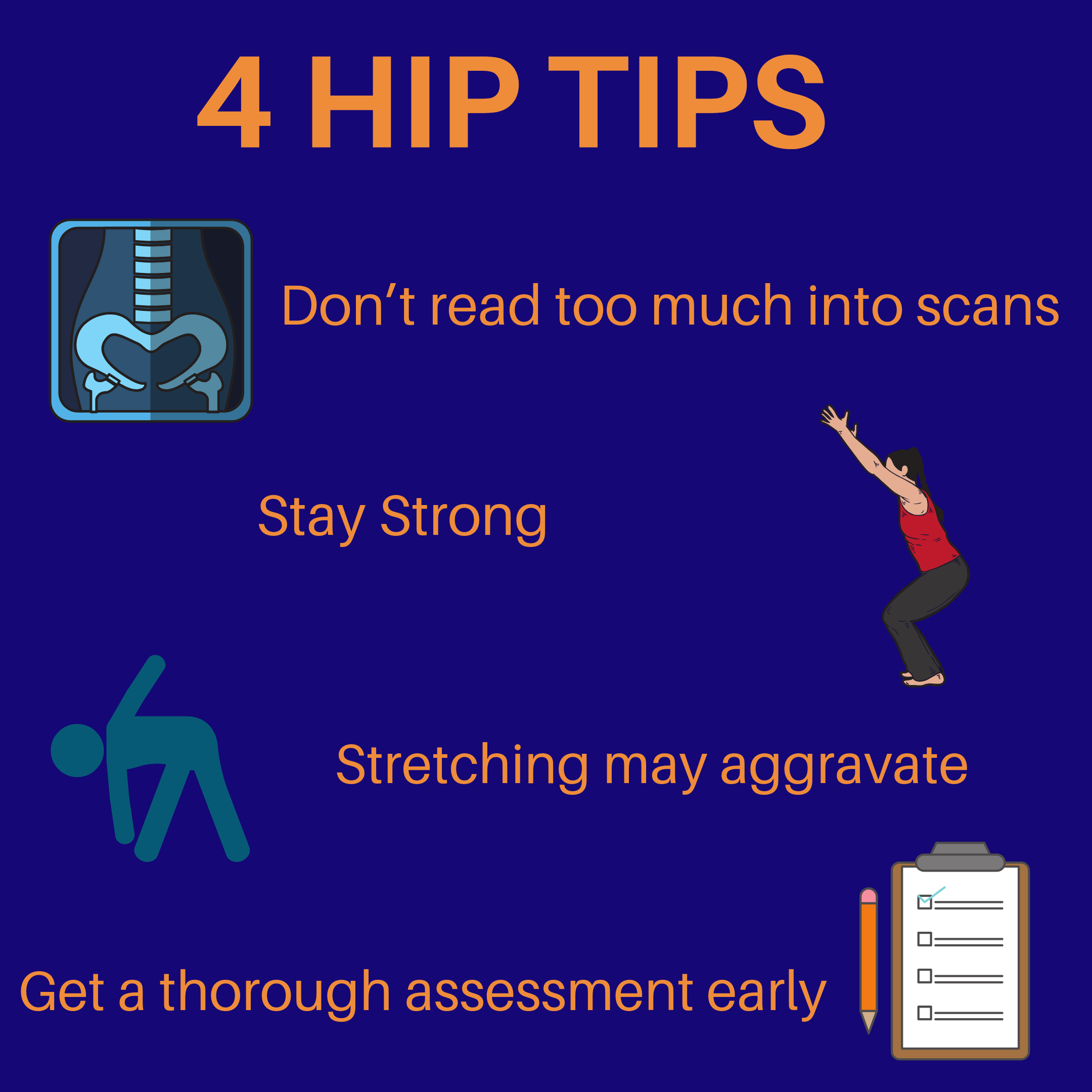4 Hip Tips
Don’t read too much into images such as X-Rays and MRI’s
Many changes that are seen on imaging are fairly normal and may have been there a long time. Often people will see a labral tear, dysplasia or signs of degeneration and become more avoidant of activity and exercise leading to further problems both with the hip and general health.
Stay Strong
There is always something you can do, no matter how much pain or disability you have. The key is finding the start point and then it needs to be progressed. A skilled physiotherapist can help you determine what level you are at and allow you to build strength without aggravating your pain.
The onset of pain can cause a significant change in muscle activity. If not addressed, this can be persistent and lead to long term disability.
Stretching may not be the answer
Hips will often feel tight but often stretching can place joints, tendons and ligaments into positions that may aggravate symptoms. it is important to understand what ways it is safe for your hip to move. With some conditions, working within a comfortable range of movement may be require to minimise discomfort.
Get a good assessment early
The hip region can be complex. Pain can arise from a number of different structures and can sometimes be referred from the lower back, abdomen or groin.
A skilled physiotherapist can help you avoid a lot of needless long-term pain with a thorough assessment and relevant treatment plan.

